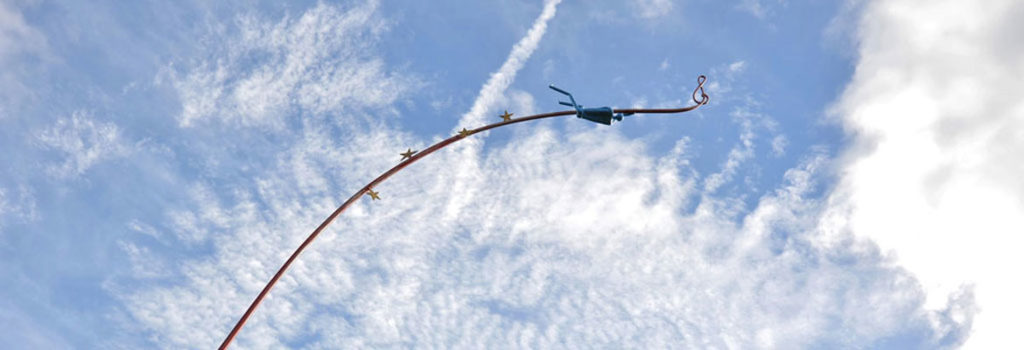Over, Above and Far Away

Written by Andrea Baffoni, Art Historian.
The sculpture of Giorgio Bronco is based on the manipulation of iron, worked figuratively and shaped to enhance the structure without losing the inherent strength of the medium. The sculptor moulds thin human figures, light and elusive, almost on the verge of vanishing, but with clarity both in form and in content.
One example is the sculpture Il Saltatore di Emozioni, a tall, slender structure topped with a small blue figure set amidst golden stars and close to a treble clef. The theme is overcoming the physical and metaphysical limits of land, a ‘jump’ between the stars as a metaphor of total openness to creativity. The slender form of the treble clef has the dual function of uniting the tangible with the intangible: music, perceived as a graphical symbol of that creative process, impossible to define.
‘Al di sopra, al di fuori’ fully encapsulates the work of Giorgio Bronco, playing with light lines and planes, alluding to the peculiarities of man as a living spirit. Slender figures, enigmatic in their playfulness, defying gravity to sway elusively in the air.
Bronco revisits the ancient forms of tribal sculpture and directs them towards his own figures, full of vitality. Each character is forged as a metal structure, but also displays movement and a relationship with the surrounding environment. These are individual stories proliferating in that unreal space between the work and the creator, such that the sculpture almost defies the subject matter, no longer living on its own, but extending the opportunities of life to the entire audience.
Organic and inorganic merge in the art, and in the gesture of the mythical blacksmith who, by human force and the energy of fire, bends matter to his will, taking the form of a new life to be discovered. Bronco manages to do this even when he does not address the figure itself. In his pure formalism, he still plays in terms of fine balances, emphasising his clear and direct identification of a universal principle.